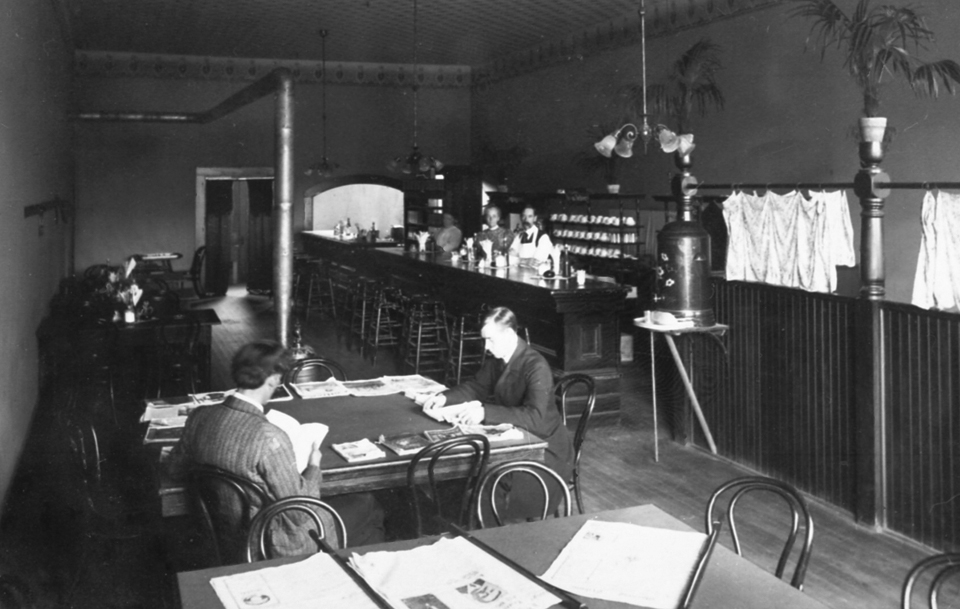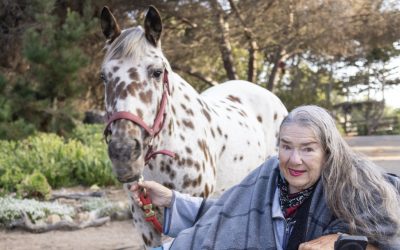For many, a cup of freshly brewed coffee in the morning is akin to the elixir of life. As the aroma and warmth of the ancient—near-mythical—beverage (best without the various pollutants of other liquids) permeates the senses, there is hope that, indeed, life will continue and, undoubtedly, prosper!
Staring into this liquid mini-pool of magic, who would think that the odiferous brew was once considered a challenge to the evils of another liquid served in saloons? In the epic social battle between those characterized as “teetotalers” and those addicted to “demon rum,” the former would gain a modicum of success, but the latter would prevail.
Nonetheless, among the varied protests to alcohol, coffee along with its relatives … tea and cocoa … certainly was a valiant and savory alternative to beer and spirits.
Here’s the story.
Today, minus its crusader quality, various establishments continue to serve what is termed coffee—too often mixed in a jumble of words for additives. Attracting customers for a variety of reasons, some quite sociable as did its predecessors, the denizens of coffee shops are most likely unaware of its quiet historical journey.
Staring into this liquid mini-pool of magic, who would think that the odiferous brew was once considered a challenge to the evils of another liquid served in saloons? In the epic social battle between those characterized as “teetotalers” and those addicted to “demon rum,” the former would gain a modicum of success, but the latter would prevail.
Nonetheless, among the varied protests to alcohol, coffee along with its relatives … tea and cocoa … certainly was a valiant and savory alternative to beer and spirits.
Here’s the story.
Today, minus its crusader quality, various establishments continue to serve what is termed coffee—too often mixed in a jumble of words for additives. Attracting customers for a variety of reasons, some quite sociable as did its predecessors, the denizens of coffee shops are most likely unaware of its quiet historical journey.
Attacking the evils of alcohol was not an exercise in compromise. There was to be no bargain with the devil. As individual and collective opposition to distilled spirits roamed and roared through the American landscape, there was another —more subtle—alternative. Some correctly argued the popular saloon not only served spirits; it was also a community gathering place with alcohol purchase the price of admission. Indeed, it was “the one democratic club in American life.” What if there were comparable spots without the odious cost of membership?
So mused Ernest Fox who hailed from England where coffee houses were a booming business operated for profit. Fox’s vision capitalized on the camaraderie of the customers but with some unique caveats. If Queenie Warden and others of the San Luis Obispo Women’s Club advocated for public drinking fountains to slate any thirsts as an option to beer, so, too, coffee and an inexpensive meal were stalwart champions for sobriety.
“To establish houses of refreshment, recreation, and amusement, where no intoxicating liquors, cigars or tobacco in any form, shall be sold,” he proposed as one of the most successful managers of the Stockton establishment. Furthermore, any profits would be used for the benefit of the customers.
So mused Ernest Fox who hailed from England where coffee houses were a booming business operated for profit. Fox’s vision capitalized on the camaraderie of the customers but with some unique caveats. If Queenie Warden and others of the San Luis Obispo Women’s Club advocated for public drinking fountains to slate any thirsts as an option to beer, so, too, coffee and an inexpensive meal were stalwart champions for sobriety.
“To establish houses of refreshment, recreation, and amusement, where no intoxicating liquors, cigars or tobacco in any form, shall be sold,” he proposed as one of the most successful managers of the Stockton establishment. Furthermore, any profits would be used for the benefit of the customers.
Initiated in San Diego in 1896, the organization was simple: any man or woman received one vote for a lifetime membership of one dollar. “The drink of democracy” would be complemented with low-cost meals supplemented by free reading materials. Decorum was expected and there was to be no profane language or boisterous conduct. While both men and women were welcome, they were often served in separate rooms. In this, the Coffee Club followed the practice of various fraternal organizations that would welcome females in a member’s family.
By the turn of the century, there were success stories with clubs in Santa Clara, Petaluma, and Bakersfield. Highlighting its own success, the largest Coffee Club in Los Angeles reported its operations were conducted from “two club-rooms visited daily by from 1,000 to 1,500 men who come to lunch, to read, to play checkers, chess, or other innocent games, or to enjoy a social chat. It is truly a club for the club less and a home for the homeless.”
By the turn of the century, there were success stories with clubs in Santa Clara, Petaluma, and Bakersfield. Highlighting its own success, the largest Coffee Club in Los Angeles reported its operations were conducted from “two club-rooms visited daily by from 1,000 to 1,500 men who come to lunch, to read, to play checkers, chess, or other innocent games, or to enjoy a social chat. It is truly a club for the club less and a home for the homeless.”
Local activists solicited support and funds to initiate the temperance alternative. There was an immediate and positive response and on November 9, 1905, the San Luis Coffee Club Association filed Articles of Incorporation with the County Recorder. Mimicking other clubs, the purpose was to “establish houses of refreshments, recreation and amusement, where no intoxicating liquors, cigars, or tobacco in any form shall be sold.” With the one-dollar lifetime membership, every participant had equal rights along with yearly elected directors who chose a business manager to oversee the club’s operations. With all profit “capitalized continuously,” debt was limited to no more than fifty cents per member.
In an interesting addition to meals in an alcohol-free club, newspapers and magazines were also provided for leisure reading. San Jose’s club included “twenty-two current magazines, the daily papers of San Jose and San Francisco, and many excellent books.” The only branch of the San Luis Obispo City Public Library (1897- 1973) was listed as the Coffee Club beginning in 1914. Undoubtedly, a Congregational minister, one of the founders of the local coffee club and important library supporter, Rev. George Willett, was a major influence in coordinating the partnership.
Why not simply go to the library to read? The response: “Watch that group of men and see how perfectly at home they are; this is their club; they would not be at home in the public library with their working-clothes on.”
An ancestor of today’s ubiquitous fast-food chains, a major attraction was inexpensive fare. Besides non-alcoholic beverages, the menu could include doughnuts, a sandwich, beans, cold cereal, Malta Vita —“the perfect food”—pie and fruit. There was minimal cooking. Combining socialization as well as reading materials, the lunchroom would be a “positive attraction, taking away that air of stiffness which is inevitable in an ordinary reading-room,” claimed advocates. “This arrangement also saves having extra help. Everything is arranged for quick service.”
In an interesting addition to meals in an alcohol-free club, newspapers and magazines were also provided for leisure reading. San Jose’s club included “twenty-two current magazines, the daily papers of San Jose and San Francisco, and many excellent books.” The only branch of the San Luis Obispo City Public Library (1897- 1973) was listed as the Coffee Club beginning in 1914. Undoubtedly, a Congregational minister, one of the founders of the local coffee club and important library supporter, Rev. George Willett, was a major influence in coordinating the partnership.
Why not simply go to the library to read? The response: “Watch that group of men and see how perfectly at home they are; this is their club; they would not be at home in the public library with their working-clothes on.”
An ancestor of today’s ubiquitous fast-food chains, a major attraction was inexpensive fare. Besides non-alcoholic beverages, the menu could include doughnuts, a sandwich, beans, cold cereal, Malta Vita —“the perfect food”—pie and fruit. There was minimal cooking. Combining socialization as well as reading materials, the lunchroom would be a “positive attraction, taking away that air of stiffness which is inevitable in an ordinary reading-room,” claimed advocates. “This arrangement also saves having extra help. Everything is arranged for quick service.”
Depending on the number of members and frequency of visits, the food and amenities of the Coffee Club were open to continual expansion and refinement. When it ceased operations, approximately 400 patrons daily took advantage of the affordable menu in the city of less than 6000 residents.
There was a fervor of the convinced as the founders contemplated the new, powerful tool in the social combat with the immoral and devastating evils of excessive alcohol consumption. Chartered for fifty years, the new temperance organization barely made fifteen.
Unlike the companion crusade to include women as voters, temperance attempted to tamper with individual choices through legislation. Such social engineering is quite often doomed to failure. The Coffee Club Associations certainly had a temperance goal but allowed the individual to make a friendly—and tasty—choice. With the War to End All Wars (WWI) behind the country, in a national exuberance of success, the temperance legions’ ultimate legal victory was in the18th Constitutional Amendment on January 16, 1919.
The celebration was not universal. Worthy of its own story, a new word “speakeasy” entered the popular vocabulary. From bathtub gin to moonshine to illegal smuggling, the Roaring Twenties has become its own historical era as flappers redefined femininity by relishing in doing what they were not supposed to do. “Demon rum” did not disappear but merely retreated into the shadows of society.
There was a fervor of the convinced as the founders contemplated the new, powerful tool in the social combat with the immoral and devastating evils of excessive alcohol consumption. Chartered for fifty years, the new temperance organization barely made fifteen.
Unlike the companion crusade to include women as voters, temperance attempted to tamper with individual choices through legislation. Such social engineering is quite often doomed to failure. The Coffee Club Associations certainly had a temperance goal but allowed the individual to make a friendly—and tasty—choice. With the War to End All Wars (WWI) behind the country, in a national exuberance of success, the temperance legions’ ultimate legal victory was in the18th Constitutional Amendment on January 16, 1919.
The celebration was not universal. Worthy of its own story, a new word “speakeasy” entered the popular vocabulary. From bathtub gin to moonshine to illegal smuggling, the Roaring Twenties has become its own historical era as flappers redefined femininity by relishing in doing what they were not supposed to do. “Demon rum” did not disappear but merely retreated into the shadows of society.
On December 5, 1933, as an early Christmas present for many, the 21st amendment repealed the hallmark legislation of 1919. In the meanwhile, there are those who argue that Prohibition—or those who opposed it—promoted organized crime in America. Its face, Al Capone, was as well-known as Presidents Harding and Coolidge.
Along with assuring the right of women to vote in the 19th Amendment (ratified on August 8, 1920), and ending with the catastrophic Great Depression, America had turned a landmark corner in its development.
Nonetheless, the Coffee Club barely had time to celebrate Prohibition or women’s suffrage. Another “demon” caused its demise. In the early hours of October 3, 1920, “Demon Fire” left the Coffee Club without a home. Unlike 15 years before, there were not sufficient crusaders willing to help resurrect the former temperance temple disguised as a social center serving coffee and Malta Vita …the perfect food.
Along with assuring the right of women to vote in the 19th Amendment (ratified on August 8, 1920), and ending with the catastrophic Great Depression, America had turned a landmark corner in its development.
Nonetheless, the Coffee Club barely had time to celebrate Prohibition or women’s suffrage. Another “demon” caused its demise. In the early hours of October 3, 1920, “Demon Fire” left the Coffee Club without a home. Unlike 15 years before, there were not sufficient crusaders willing to help resurrect the former temperance temple disguised as a social center serving coffee and Malta Vita …the perfect food.





